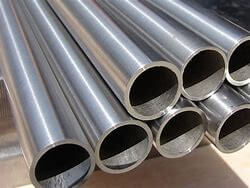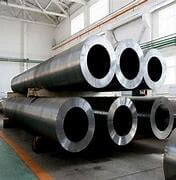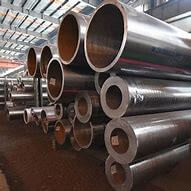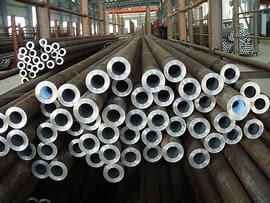MSS SP-44 is a standard developed by the Manufacturers Standardization Society of the Valve and Fittings Industry (MSS) that covers steel pipeline flanges.
This standard specifies the materials, dimensions, tolerances, and marking requirements for flanges intended for use in high-pressure and high-temperature service in the oil, gas, and petrochemical industries.
Here are some key features of MSS SP-44:
1. Materials: The standard covers flanges made from carbon steel, alloy steel, and stainless steel.
2. Flange types: MSS SP-44 covers weld neck, slip-on, lap joint, blind, and threaded flanges, with nominal pressure ratings ranging from Class 150 to Class 2500.
3. Dimensions: The dimensions of MSS SP-44 flanges are specified by the nominal size, the outside diameter, the bolt circle diameter, the thickness, and the number of bolt holes.
4. Tolerances: The standard specifies the dimensional tolerances for MSS SP-44 flanges, including the allowable deviation from the specified dimensions.
5. Marking: Flanges in accordance with MSS SP-44 must be marked with the manufacturer’s name or trademark, the nominal size, the pressure class, the material grade, and the standard number (MSS SP-44).
6. Testing: The standard specifies the testing requirements for MSS SP-44 flanges, which include non-destructive testing (NDT) methods such as radiographic testing and ultrasonic testing.
7. Quality assurance: MSS SP-44 requires manufacturers to have a quality assurance program in place that ensures the flanges meet the required specifications and standards.
MSS SP-44 is an important standard for the manufacture of steel pipeline flanges used in high-pressure and high-temperature service.
The standard provides guidelines for the design, materials, manufacturing, and testing of flanges to ensure safe and reliable operation in the oil, gas, and petrochemical industries. It’s important to work with a qualified engineer or supplier to ensure that the appropriate standard is selected for a specific application and that the flanges used meet the required standards and specifications.
MSS SP-44 covers several different types of flanges that are commonly used in high-pressure and high-temperature service in the oil, gas, and petrochemical industries. Here are some key differences between the flange types covered by MSS SP-44:
1. Weld neck flanges: Weld neck flanges have a long tapered hub that is welded to the pipe, providing a high-integrity, leak-free joint. Weld neck flanges are commonly used in high-pressure and high-temperature service.
2. Slip-on flanges: Slip-on flanges are slipped over the end of the pipe and welded in place. They are easier to align and install than weld neck flanges, but are not as strong and are not recommended for high-pressure and high-temperature service.
3. Lap joint flanges: Lap joint flanges are used with a stub end fitting and are designed to rotate around the stub end, simplifying the alignment of bolt holes. They are commonly used in low-pressure and low-temperature service.
4. Blind flanges: Blind flanges are used to close the end of a pipeline or vessel. They are commonly used in high-pressure and high-temperature service, where access to the inside of the pipeline or vessel is not required.
5. Threaded flanges: Threaded flanges have a threaded bore and are used in low-pressure and low-temperature service. They are commonly used in plumbing and low-pressure gas and liquid applications.
The specific type of flange used in a given application will depend on factors such as the type of fluid being transported, the temperature and pressure requirements, and the location of the installation. It’s important to select the appropriate type of flange for a specific application to ensure safe and reliable operation. It’s also important to ensure that the flanges used meet the required standards and specifications for the specific type of flange and the application in which they will be used.





